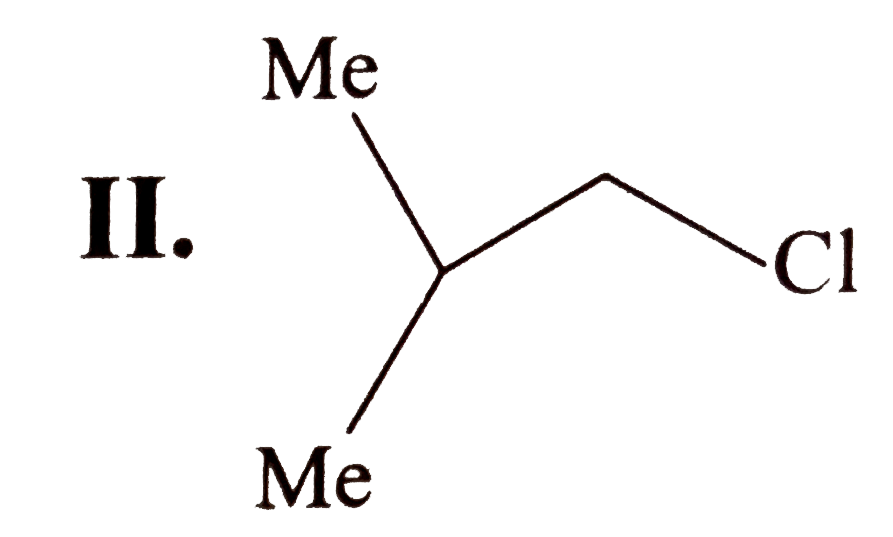Given are cyclohexanol , acetic acid trinitrophenol and phenol . In these the order of decreasing acidic character will be:
(a)
(b)
(c)
(d)
II gt III gt I gt IV
) II gt III gt IV gt I
III gt IV gt II gt I
The correct Answer is:A
To determine the order of decreasing acidic character among cyclohexanol (I), acetic acid (II), 2,4,6-trinitrophenol (III), and phenol (IV), we need to analyze the acidity of each compound based on the stability of their conjugate bases.
1. Identify the Compounds:
- Cyclohexanol (I): An aliphatic alcohol with the structure C6H11OH.
- Acetic Acid (II): A carboxylic acid with the structure CH3COOH.
- 2,4,6-Trinitrophenol (III): A phenolic compound with three nitro groups attached to the benzene ring.
- Phenol (IV): A simple aromatic compound with the structure C6H5OH.
2. Understanding Acidity:
- Acidity is determined by the ability of a compound to donate a proton (H⁺) and the stability of the resulting conjugate base.
- The more stable the conjugate base, the stronger the acid.
3. Analyze Each Compound:
- Cyclohexanol (I): The conjugate base formed is cyclohexoxide, which is not stabilized by resonance. Therefore, it has the lowest acidity.
- Acetic Acid (II): The conjugate base is acetate (CH₃COO⁻), which is stabilized by resonance between the two oxygen atoms. This gives it moderate acidity.
- Phenol (IV): The conjugate base is phenoxide (C₆H₅O⁻), which is also stabilized by resonance with the benzene ring. It is more acidic than acetic acid.
- 2,4,6-Trinitrophenol (III): The conjugate base is highly stabilized by the three electron-withdrawing nitro groups, which enhance the resonance stabilization of the phenoxide ion. This makes it the most acidic among the four compounds.
4. Order of Acidity:
Based on the analysis:
- 2,4,6-Trinitrophenol (III) > Acetic Acid (II) > Phenol (IV) > Cyclohexanol (I)
5. Final Answer:
The order of decreasing acidic character is:
(III) > (II) > (IV) > (I)
Conclusion:
The correct answer is option (c) II > III > IV > I.
- Cyclohexanol (I): An aliphatic alcohol with the structure C6H11OH.
- Acetic Acid (II): A carboxylic acid with the structure CH3COOH.
- 2,4,6-Trinitrophenol (III): A phenolic compound with three nitro groups attached to the benzene ring.
- Phenol (IV): A simple aromatic compound with the structure C6H5OH.
- Acidity is determined by the ability of a compound to donate a proton (H⁺) and the stability of the resulting conjugate base.
- The more stable the conjugate base, the stronger the acid.
- Cyclohexanol (I): The conjugate base formed is cyclohexoxide, which is not stabilized by resonance. Therefore, it has the lowest acidity.
- Acetic Acid (II): The conjugate base is acetate (CH₃COO⁻), which is stabilized by resonance between the two oxygen atoms. This gives it moderate acidity.
- Phenol (IV): The conjugate base is phenoxide (C₆H₅O⁻), which is also stabilized by resonance with the benzene ring. It is more acidic than acetic acid.
- 2,4,6-Trinitrophenol (III): The conjugate base is highly stabilized by the three electron-withdrawing nitro groups, which enhance the resonance stabilization of the phenoxide ion. This makes it the most acidic among the four compounds.
Based on the analysis:
- 2,4,6-Trinitrophenol (III) > Acetic Acid (II) > Phenol (IV) > Cyclohexanol (I)
The order of decreasing acidic character is:
(III) > (II) > (IV) > (I)
The correct answer is option (c) II > III > IV > I.
Similar Questions
Knowledge Check
The order of reactivities of the following alkyl halides for an SN2 reaction is:
RF>RCI>RBr>Rl
RF>RBr>RCl>Rl
RCl>RBr>rF>Rl
Rl>RBr>RFARF>RCI>RBr>RlBRF>RBr>RCl>RlCRCl>RBr>rF>RlDRl>RBr>RFIn group 14 of the periodic table, the oxidising power of tetravalent species decreases in the order
a. Ge>Pb>Sn
b. Ge>Sn>Pb
c. Pb>Ge>Sn
d. Pb>Sn>GeAGe>Pb>SnBGe>Sn>PbCPb>Ge>SnDPb>Sn>GeIf z =x +iy lies in the third quadrant then ¯zz also lies in third quadrant if (i) x>y>0 (ii) x<y<0 (iii) y<x<0 (iv) y>x>0
Ax>y>0Bx<y<0Cy<x<0Dy>x>0
The order of sheiding effect for different orbital is s>p>d>f
View SolutionState True Or False
!(2>3&&4>6)
View SolutionIf a,b,c are in H.P, where a>c>0, then :
View SolutionPredict the order of reactivity of following compounds in dehydrohalogenation.
a. I. II.
II. 
III. IV.
IV. 
V.
b. I. II.
II. 
III. IV.
IV. 
View SolutionWhich of the following is the correct order of ionisation energy?
(1) Be+>Be (2) Be>Be+
(3) C>Be (4) B>Be
View Solution

 (II)
(II) 
 (IV)
(IV) 